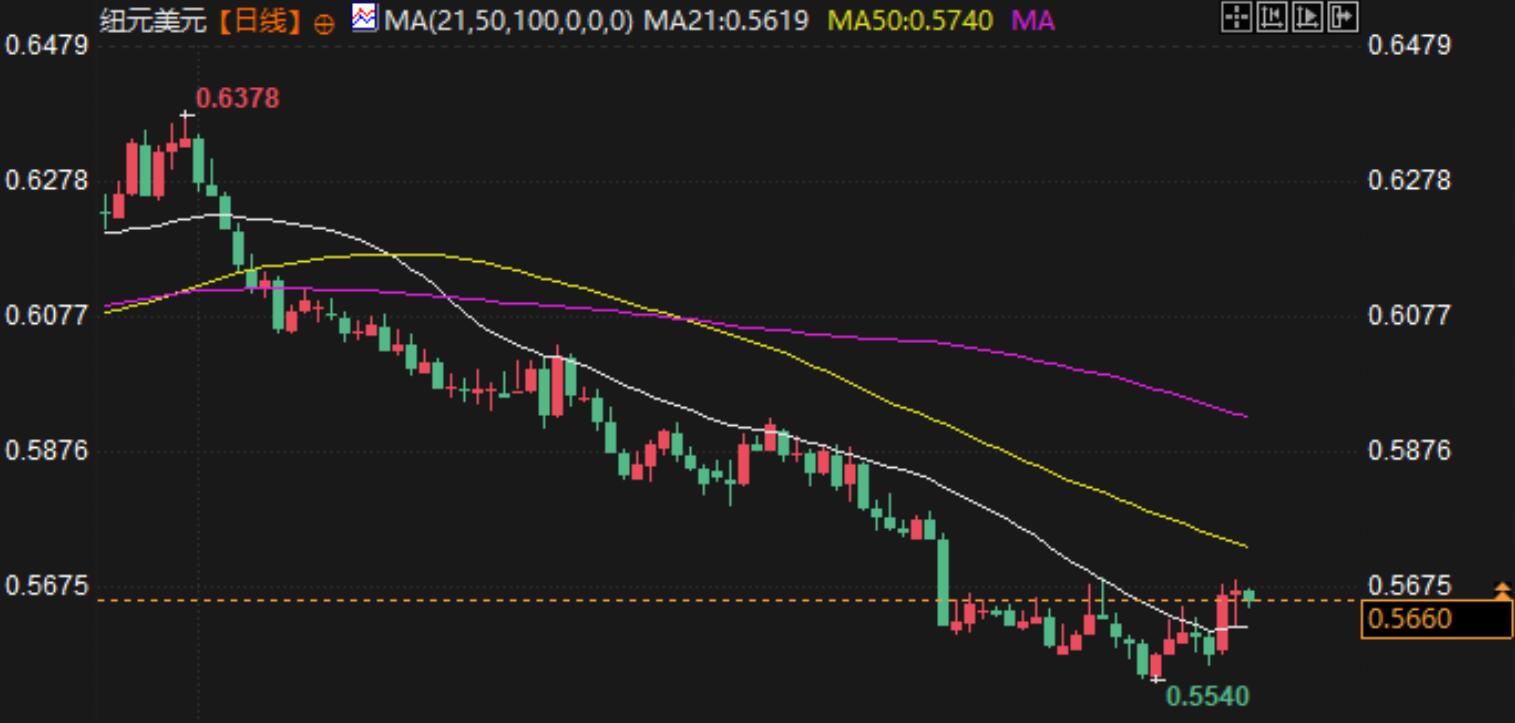Analysis of foreign exchange market trend: New Zealand dollar under pressure! How do we go next?
On Wednesday (January 22), the New Zealand dollar continued its two-day decline, approaching the level of 0.5650. The current market focus is on New Zealand's domestic inflation data and US President Trump's tariff plan, which together shape the short-term trend of the foreign exchange market.
New Zealand inflation data stable, market bets on further interest rate cuts
According to data released by Statistics New Zealand, the Consumer Price Index (CPI) for the fourth quarter increased by 2.2% year-on-year, slightly higher than market expectations, but still within the 1% -3% target range set by the Reserve Bank of New Zealand (RBNZ). In terms of quarterly performance, CPI rose by 0.5%, lower than the 0.6% increase in the previous quarter. These data indicate that domestic inflation pressure in New Zealand is relatively mild.
The market's expectations for RBNZ's monetary policy have been further strengthened by the latest data. The current pricing in the swap market shows that investors believe there is a 90% chance that RBNZ will announce a 50 basis point (bps) interest rate cut at its meeting on February 19th. If this interest rate cut is implemented, it will be the third significant interest rate cut by RBNZ since last year, with the goal of cumulatively lowering policy rates by 100 basis points for the remaining time of 2025.
The expectation of this round of interest rate cuts further weakened the attractiveness of the New Zealand dollar, leading to sustained pressure on its performance against the US dollar. In the context of a stable macroeconomic background, the loose direction of New Zealand policies has become a key dominant factor in market pricing.
Trump's tariff plan intensifies risk aversion, supporting the US dollar
Trump's tariff plan has increased market concerns about future policy uncertainty. This triggered a risk aversion sentiment in the market, with funds flowing towards safe haven assets, thus supporting the US dollar. The tariff plan not only provides support for the US dollar, but also exacerbates doubts about the prospects of global economic recovery, thereby putting pressure on high-risk assets such as the New Zealand dollar.
From a policy perspective, the market also expects the Federal Reserve (Fed) to maintain its benchmark overnight rate in the range of 4.25% -4.50% at its January meeting this year. Due to Trump's policies potentially pushing up inflation, the Federal Reserve has limited room for easing, and the market believes that the Fed may only cut interest rates once this year. This relative tightening of policies provides further support for the US dollar.
Technical aspect: NZD/USD continues to decline, key support faces test
The New Zealand dollar is currently trading around 0.5656 against the US dollar, and from the daily chart, the price continues to operate in a bearish trend. The MACD indicator shows a slight rebound in the bar chart, but the DIFF line (-0.0028) and DEA line (-0.0045) are still in negative territory, indicating that bearish forces dominate in the short term. In addition, the values of RSI (6,21,24) are 59.88, 51.45, and 44.22, respectively, indicating that the market is in a neutral weak state, suggesting that prices may still seek further downward support.
In the short term, the key support level for NZD/USD is concentrated in the 0.5630 area, which is the low point of the past few weeks. If this level is breached, the exchange rate may further test the 0.5600-0.5580 range. The upper resistance is around 0.5700, which is also a high point that the New Zealand dollar has tested multiple times in the past few trading days but failed to break through effectively.

Tips:This page came from Internet, which is not standing for FXCUE opinions of this website.
Statement:Contact us if the content violates the law or your rights
